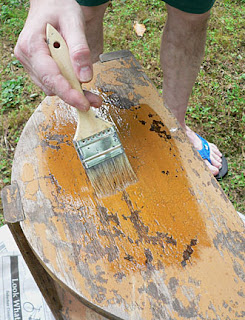 QUESTION: I have a 1939 New York World's fair desk calendar that has little knobs that change the date, month and a 1934 Chicago world's fair dish which could be silver plate with the federal building, electrical group, hall of science and travel and transport buildings embossed on the bottom. Do these items have any value other than as keepsakes?
QUESTION: I have a 1939 New York World's fair desk calendar that has little knobs that change the date, month and a 1934 Chicago world's fair dish which could be silver plate with the federal building, electrical group, hall of science and travel and transport buildings embossed on the bottom. Do these items have any value other than as keepsakes?ANSWER: What you have are real collectibles. And while they may not be worth a fortune, they still have value in the collectible market. Unlike created collectibles, like decorated plates and such, objects like these, as well as those from 19th to mid-20th-century advertising, etc, can grow in value as the supply of them dwindles through breakage and deterioration. This is the cause of your uncertainty.
Collecting is one of the oldest hobbies. King Tut of Egypt collected walking sticks. Heiress Marjorie Merriweather Post collected Faberge originals. Franklin D. Roosevelt and King George VI of England collected stamps. There are also coin, doll, cup, and spoon collectors. All of them had one thing in common—the love of collecting unique and beautiful objects.
Why do so many people collect these objects? There’s a basic human need to possess items that have stood the test of time—items that have become a part of history.
Many people have the desire to own beautiful things but for mostly economic reasons, this isn’t possible. Up to the latter part of the 20th century, collecting valuable items has mostly been the hobby of the wealthy. To make it possible for the growing post-war middle class to feel the same thrill of collecting as the rich, gift collectible manufacturers began to create items with implied value which the average person could afford and which, in time, were supposed to increase in value.
Collectibles manufacturers like the Franklin Mint began by minting special coins and producing figurines and plates. Eventually, people collecting these items grew into the largest group of collectibles collectors.
Part of the incentive of collecting is the inherent value of the object. While speculation was the motivation for collectible purchases in the late 1970's, most collectors today buy for the appeal of the item.
To keep the collecting public buying, manufacturers produced objects in series. This gave some people the incentive to purchase every piece in the series. The sad thing is that while the manufacturer guaranteed the value of the object with a certificate of authenticity, and that the value would definitely increase, they really had no control over the market they had created for their wares.
Another ploy of these manufacturers was the term “limited edition.” What this meant was that they'd produce only a certain number of each item, thus creating a built-in appreciation value. However, the number was often vague. For example, they guaranteed to produce ceramic items for a certain number of firing days, but no one knows just how many pieces they produced each day. Some of the more sought after items, such as Hummel figurines, had editions of 2,000 to 10,000.
In order to make their “collectibles” attractive to this new group of collectors, manufacturers made sure each piece evoked a nostalgic response in both men and women. The former liked the manly aura of collectible coins, military figurines, and model cars—the sportier and more luxurious the better. The latter like the beautiful images that adorned porcelain plates and delicate figurines, reminiscent of Meissen ware.
One of the most popular of the collectible figurine series was "Stormy Weather," picturing a little boy and girl huddled under an umbrella. The Goebel company introduced at least five new pieces a year, which kept collectors satisfied and the company in the black.
Collectible plates, which took up where magazine illustration left off, became the second most popular collectible. Some depicted characters from fantasy and fiction as well as adventurers, T.V. and film stars, and scenes of the past. Many were reminiscent of the old Saturday Evening Post covers. To create a cache for their collectibles, companies took on names such as the Bradford Exchange, giving collectors the impression that what they bought was an investment.
The plates created by Royal Copenhagen became some of the most popular. These familiar blue and white plates featured scenes from Danish life. Along with Hallmark and others, the company also produced collectible Christmas ornaments.
Ironically, these collectibles weren’t cheap. For all money they spent on them, collectors could have been buying real collectibles. These are objects tied to a certain event or period in history, such as 1939-1940 New York World’s Fair collectibles. Hundreds of companies produced over 25,000 different souvenirs in larger and smaller quantities for the Fair. Even early Coca-Cola advertisements and paraphernalia have value. Later manufactured Coca-Cola items, on the other hand, do not.
For more information on the created collectibles market, be sure to read this article, "9 Completely Worthless Collectibles."








































